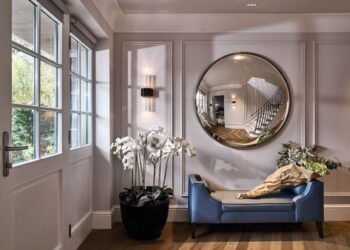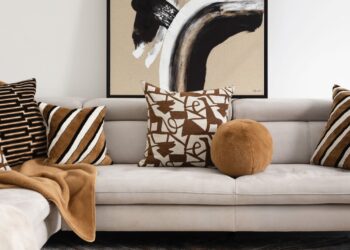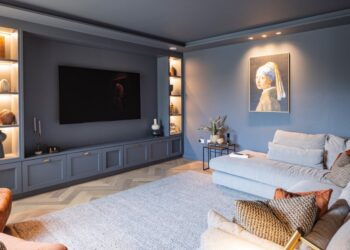You don’t have to be a collector or an expert to delve into the world of antiques — one or two special pieces adds individuality, even to a home with a modern aesthetic
There are infinite choices in the world of interiors. It can be tempting to err on the side of caution, to choose one style and stick with it. But blending styles and mixing old with new can elevate the design of a space, especially when you find an interesting piece you adore.
Daunted by the prospect of delving into antiques? Founder of Kingston Lafferty Design, Róisín Lafferty, advises shoppers to browse and see what they are drawn to. “Antiques can be similar to art in that people can feel a bit intimidated by them. However, like art, antiques are about what moves you. So, pick pieces you like and things you are drawn to. By exploring antique shops and markets, you will discover a whole new world of possibilities.”
UNIQUE DISCOVERIES
It’s cliché to say that antiques are a talking point, but really, when modern aesthetics can be so pared back and minimal, an antique piece can really transform the space. “For me, interior spaces should tell a story, antiques add depth, interest and originality and they come with their own story,” said Róisín.
“I love being in a space where the longer you are there, the more you notice. Antiques give you that depth, because they are full of interesting forms, delicacy and detailing.”
There are techniques and styles of antiques that you don’t see in contemporary pieces. “With antiques, you get such a lot of beautiful, fine detailing that’s simply not done anymore, lovely gilt mirrors, occasional tables with marble, marquetry or gilt inlay and fine brass lamps,” Rachel says. “You will also find some gorgeous antique ceramics such as oriental antique vases, hand painted urns, plant holders and Jardiniers. “There is no right or wrong way of doing this, it’s about what you are drawn to. Personally, I love Italian mid-century designs, they have a lovely femininity with beautiful curves and detailing.”

KEEP SPACE IN MIND
Just as with any purchase for your home, you need to ensure an antique will work with what you already have. “Make sure that the scale works. For a normal family home think about including smaller elements. Things like console tables, chairs, light fittings and accessories are great for adding touches of individuality,” Roisin says. “It’s easy to add a beautiful chair in a corner. Victorian wingback chairs are full of character and can be upholstered in colourful fabrics. If you have a blocky contemporary sofa, try placing a fine antique sideboard with delicate legs beside it.”
Even if you do discover a love for antiques, stay true to the modern style of your home. “Don’t clutter, you don’t want a room to look like an antique shop. Use antique items sparingly so each piece stands out and is visible,” Roisin advises.

Here designer Róisín Lafferty uses Niels Moller rosewood dining chairs from Niall Mullen Antiques, Italian 1950s dining table and floor lamp from Acquired.ie, with Majolica plant stand and Majolica planter from O’Sullivan Antiques. IADA members. Photo by Al Higgins.
WHERE TO SHOP
Should you try to stick to furniture from certain periods? Founder of The Vintage Hub and Mid-Century Online, Killian McNulty says that blending together pieces can work too. “With the right touch, an eclectic mix of pieces from different periods can instantly achieve a very contemporary yet timeless interior,” said Killian, who is a member of the Irish Antique Dealers Association. “Look around, find pieces that you love and see if you can visualise them in your home. Don’t add too many pieces at once, but if you choose what you love, you will end up with a nice interior.”
He suggests starting by engaging with your local antique shop. You can find a list at IADA.ie.
Another great place to visit is Timeless, The Irish Antique Dealers Fair at Dublin’s RDS in September.

Here, designer Róisín Lafferty uses a table by Milo Baughman and Danish rosewood chairs from mid-centuryonline.com, with paintings by John Boyd from the Cross Gallery and oriental rug from Peter Linden. Photo by Al Higgins.








